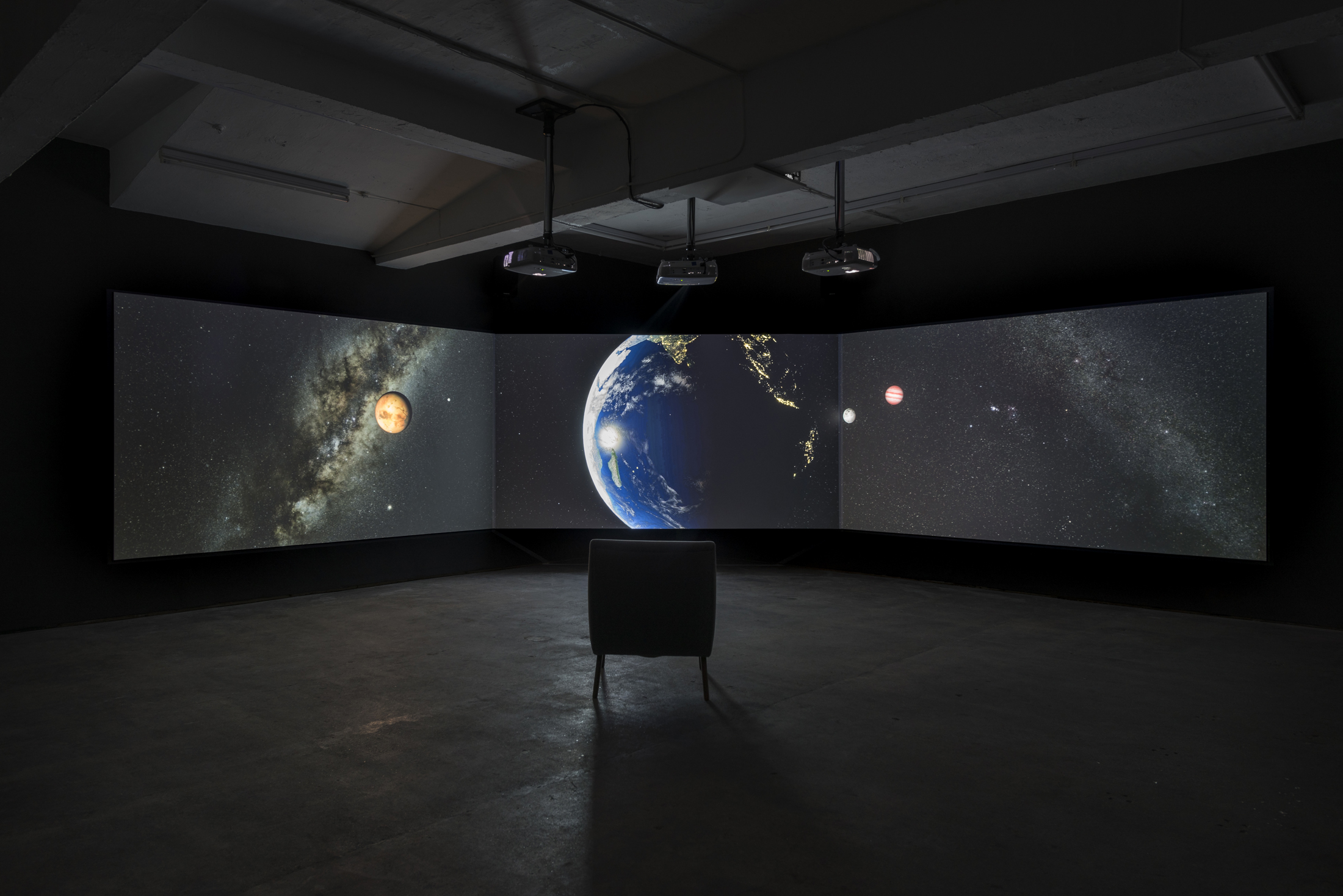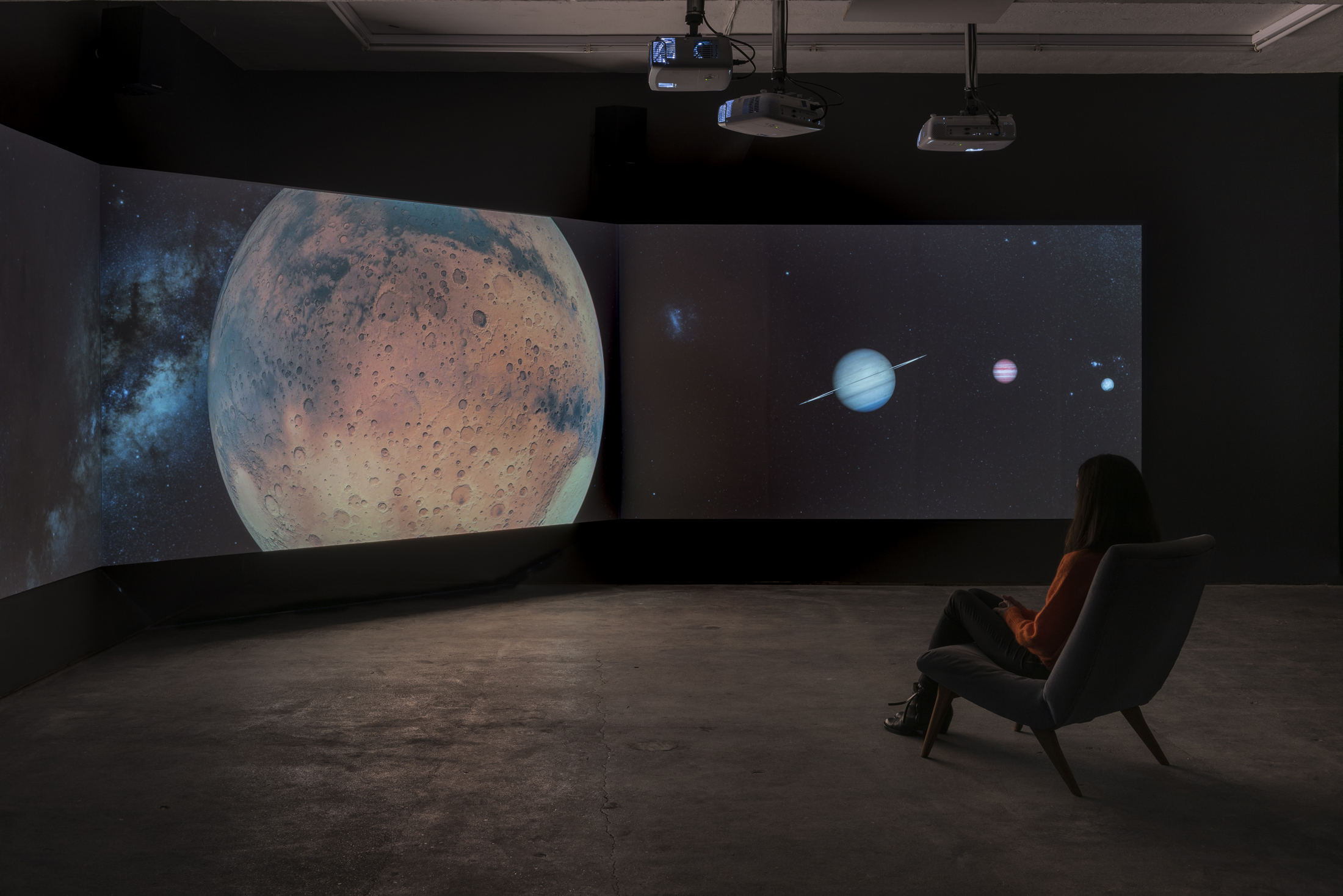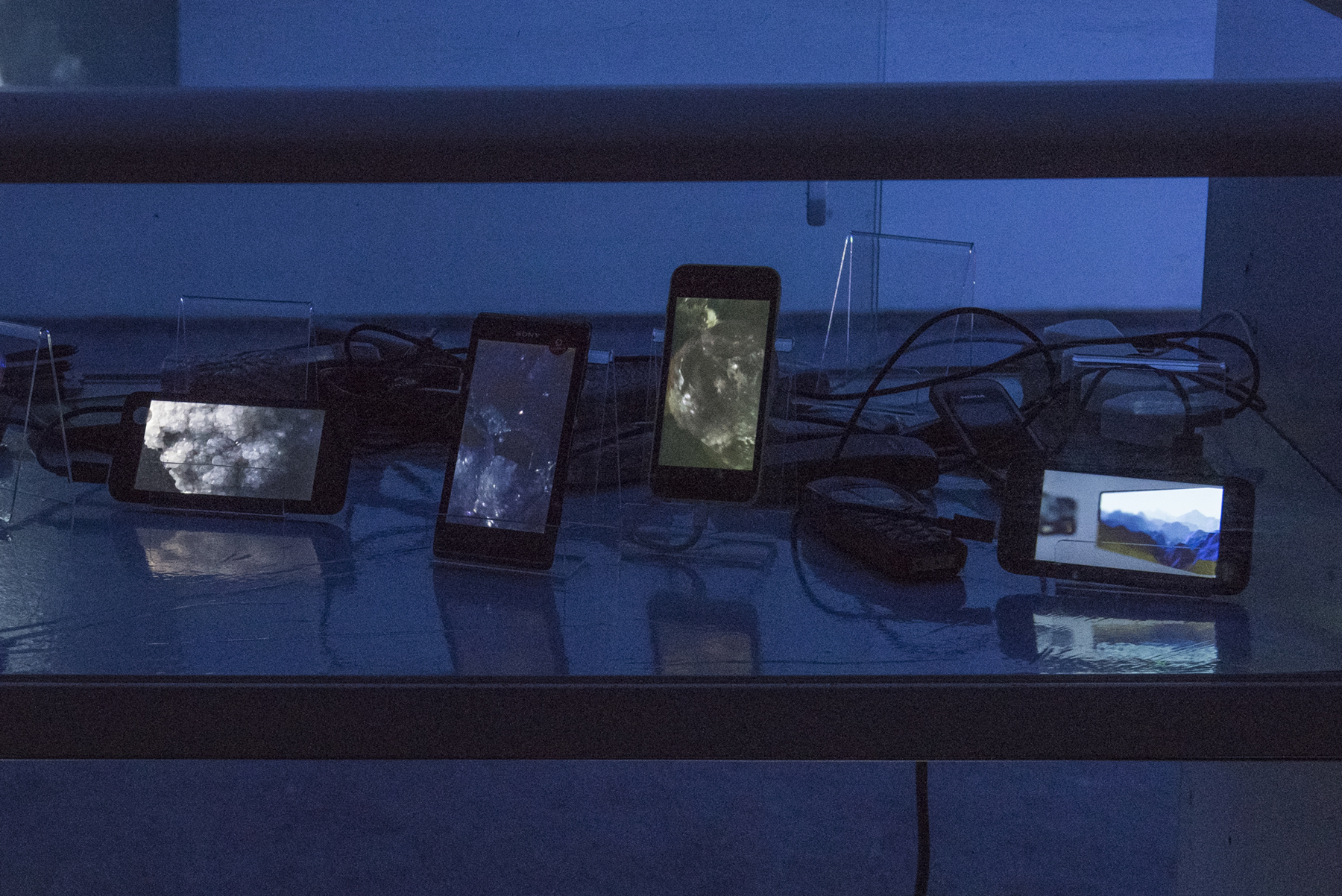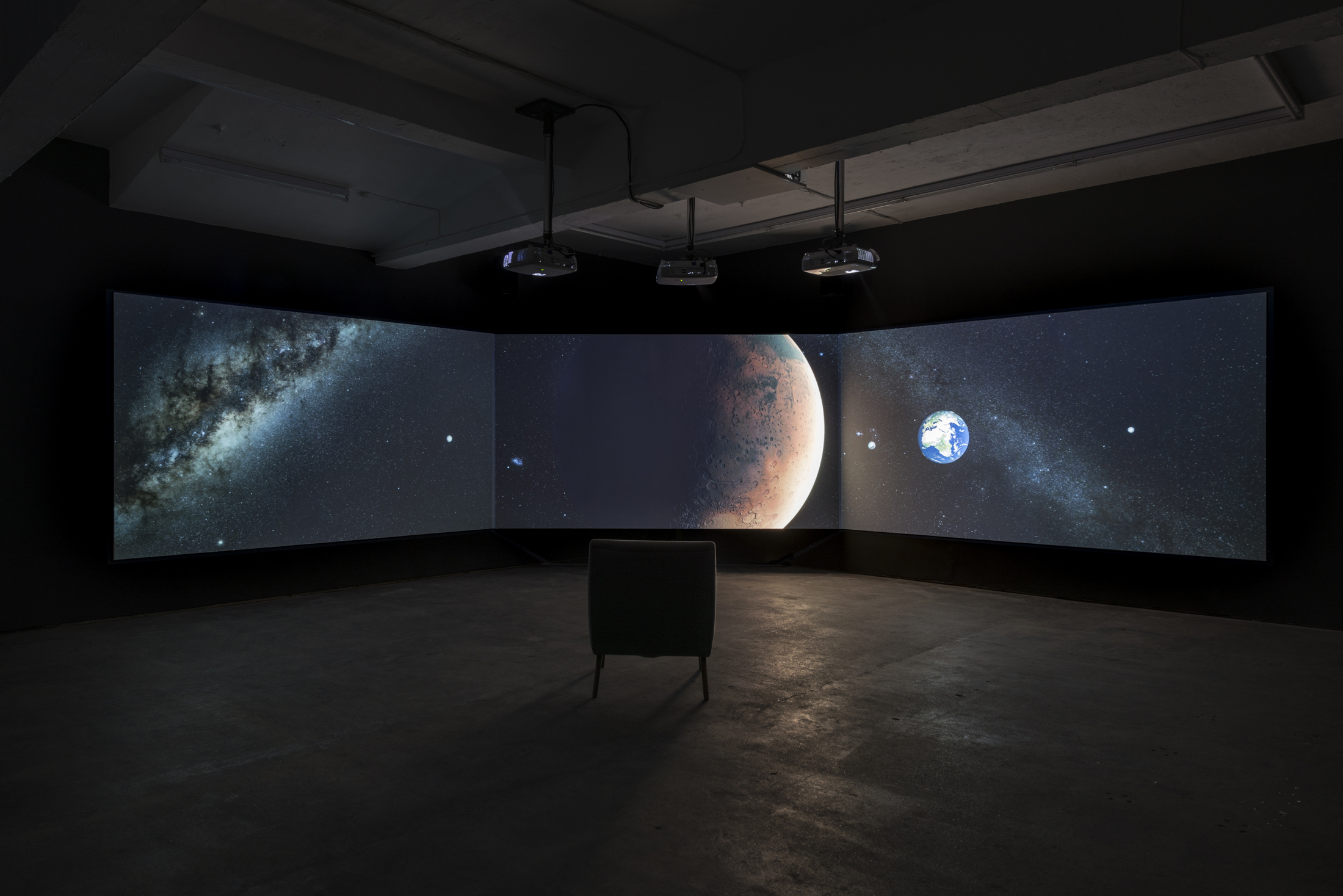Exhibition extended Saturday 13th to Saturday 27th January 2018
Comprising three video installations and a new series of photographs, David Blandy’s third exhibition at Seventeen focuses on the artist’s relationship to technology and memory, speculation about Armageddon and a loss of connection to the server.
The installation The End of the World (2017) is a three-screen video projection enclosing the viewer in a planetarium style view of the solar system. The accompanying audio monologue intertwines examples of end times, examining its differing cultural forms. The narrator touches on macro ideas effecting nations such as genocide and climate change and also more personal, intimate moments of loss and grief. A section of the film appropriates chat-room text from users of Asheron’s Call, a multi-player online role-playing game, whose servers were recently shut down after 17 years of collective game play. The users gathered to communally experience the end of their world, publicly narrating their emotions.
A new series of photographic works follow in the next room. Within each of the trio of collages a lattice of images have been interwoven, to form the outline of a star. Microchips, crystals, nebulae and rock formations are stretched and distorted into the form.
The Archive (2017) is a video made inside the Hans Tasiemka Archive, using 360-degree filming technology. This sprawling resource is run by 94-year-old Edda Tasiemka from a 1920s semi-detached house in Golders Green, London. Amassed over decades, the collection holds hundreds of thousands of idiosyncratically catalogued newspaper cuttings forming a web of interconnected stories and information. Masses of cuttings are kept all around the house, from the toilet to her garage, categorised through subjects as diverse as ‘The Family’, ‘Isis’ and the ‘Kardashians’. Using a VR headset the viewer is deposited into the centre of the sprawling, obsolete accumulation, able to examine the mess, which is overlaid by a rhythmic narration about memory and our ability to record knowledge.
HD Lifestyle (2017) focuses on the physical nature of the screen, its component elements and the cost of their extraction. Blandy notes the physicality of the Cloud, the ocean floor cables and rare earth minerals that are extracted at such an environmental cost that the Chinese state has designated specific ‘sacrificial zones’ – concentrated toxic wastelands permitted in order to maintain high levels of production. The material forms of ‘the device’ are countered by the users desire for dematerialisation, to be brought closer to the information, the game, the experience, to reach through the screen and interact directly with content. The video plays across multiple screens, on monitors, laptops and smart phones, displayed in a battered shop counter display.
Works in this exhibition were made with the generous support of Arts Council England.
The artist would like to thank The Tasiemka Archive, Edda Tasiemka and Peter Collis.














Still from: David Blandy, HD Lifestyle, 2016
